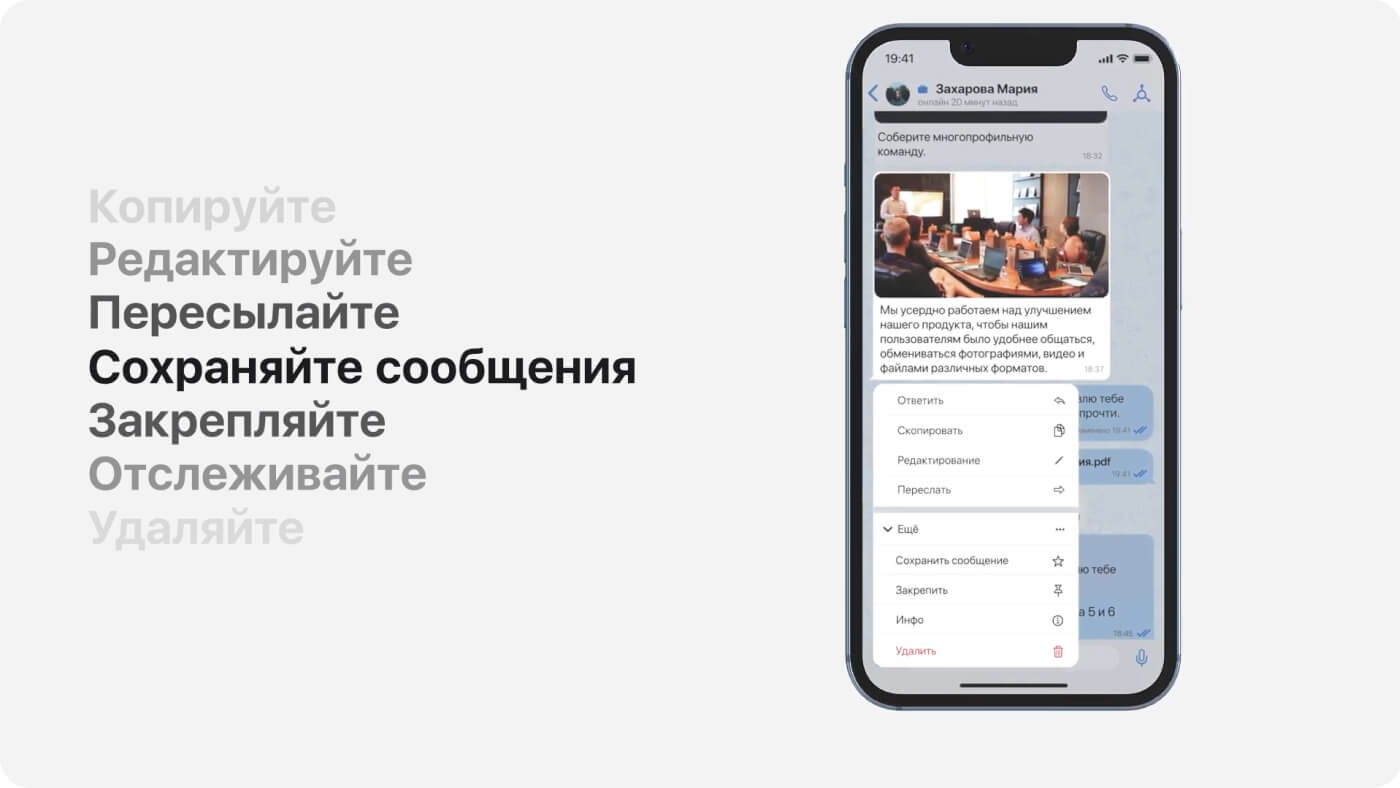The amount of information in chats is growing at a tremendous rate, turning correspondence into an endless stream of messages. To maintain order, threads appeared - a way to combine related messages into one topic within a channel or group chat. In this article, we will analyze what a thread is, why it is useful and how threads are arranged on the eXpress corporate platform.
What is a thread and where did it come from
A thread (from the English thread - "thread") is a discussion thread that combines messages on one topic. You write a message in a chat and can continue the discussion within a separate chain, as in the comments format. The concept of threads was born in the era of electronic forums, and in messengers it took root as a way to organize communication and save users from chaos in chats. Today, threads are used in both work and personal communications. You can reply directly to a specific message and have a conversation in a separate thread. This format helps to follow the discussion and quickly find the information you need.
Advantages of threads
- Less information noise - discussions remain within the thread, and the main chat is not overloaded with messages on different topics.
- Quick search - no need to scroll through hundreds of messages to find the answer or file you need.
- Targeted notifications - only participants in a specific thread receive notifications, not all chat participants.
- Convenient storage - files, links, and comments remain in one place and are always available for searching.
Where threads are used and who benefits from them
One of the most common scenarios for using threads is the work of IT teams. For example, a team has a working chat with developers, programmers, managers, where user problems with the product are recorded. In such a chat, each message is a specific error that needs to be recorded and discussed if necessary. To prevent messages with different errors from getting lost in the correspondence, one message is created with a description of the problem, and a thread under it. This format of targeted communication helps to quickly respond to incidents and keep all participants focused on their work.
In addition to IT, threads are actively used in sales departments - where work is carried out with clients. They help keep all communication on a specific deal in one place. Threads are also used by marketers, for example, to discuss content. A thread is like a task, only in a messenger, not in a CRM. Therefore, companies from various sectors - from retail to banks - can use them to organize their processes.
How threads are organized in eXpress
In eXpress, threads are called "Discussions". In the interface, they look like comments under a message in a group chat or channel. Any participant can open a discussion (thread) to comment on a particular message without "cluttering" the main chat with messages. The discussion is linked to the first message, but is essentially a separate group chat. They can be seen on the "Discussions" tab above the list of all chats (display can be turned on or off). Discussions you are not participating in can be identified by the comment counter under the message in the chat or channel.
You automatically become a participant in the discussion if:
- you are a member of the chat or channel where it was created, and you have auto-subscription enabled;
- you were mentioned in the discussion with @;
- you wrote a message in the thread yourself;
- you subscribed manually.
Subscription is available only to participants of the original chat or channel. You will not receive notifications only in some cases:
- you deleted the chat/channel or the discussion itself;
- you were excluded from the chat or channel;
- you unsubscribed yourself.
How to create a thread in eXpress
Threads are available by default in group chats, and the function is enabled by the administrator in channels.
How to start a discussion:
- Open the context menu of the message (long press on mobile or right click on desktop).
- Select "Start a discussion".
- Leave the first comment
That's it. You have created a thread. But there are exceptions. Threads cannot be created for:
- system messages;
- messages consisting only of emoji or stickers;
- messages sent in high privacy mode.
Thread capabilities in eXpress
- View all attachments: files, media, links;
- Search within the selected thread;
- Download the entire discussion history;
- Delete historyand;
- Manage your subscription;
- Manage notifications;
- View the list of participants (in group chats).
Tips for communicating in threads
To make sure that threads really help and don't turn into another chaotic chat, try to follow a few simple rules.
- Create a thread on the topic - start a discussion only when there is a specific question, task or comment on a specific message.
- Formulate the topic clearly and structured - the first comment sets the tone for the entire thread, so it is better to write a short message and discuss the details in the comments.
- Tag participants - use @ mentions so that the right colleagues can quickly join the conversation and didn't miss anything important.
- Close threads when the task is completed — leave a final message with the solution so that in the future it will be clear how everything ended.
By following these recommendations, teams will be able to use threads not just as a convenient messenger function, but as an effective tool for working with tasks.





